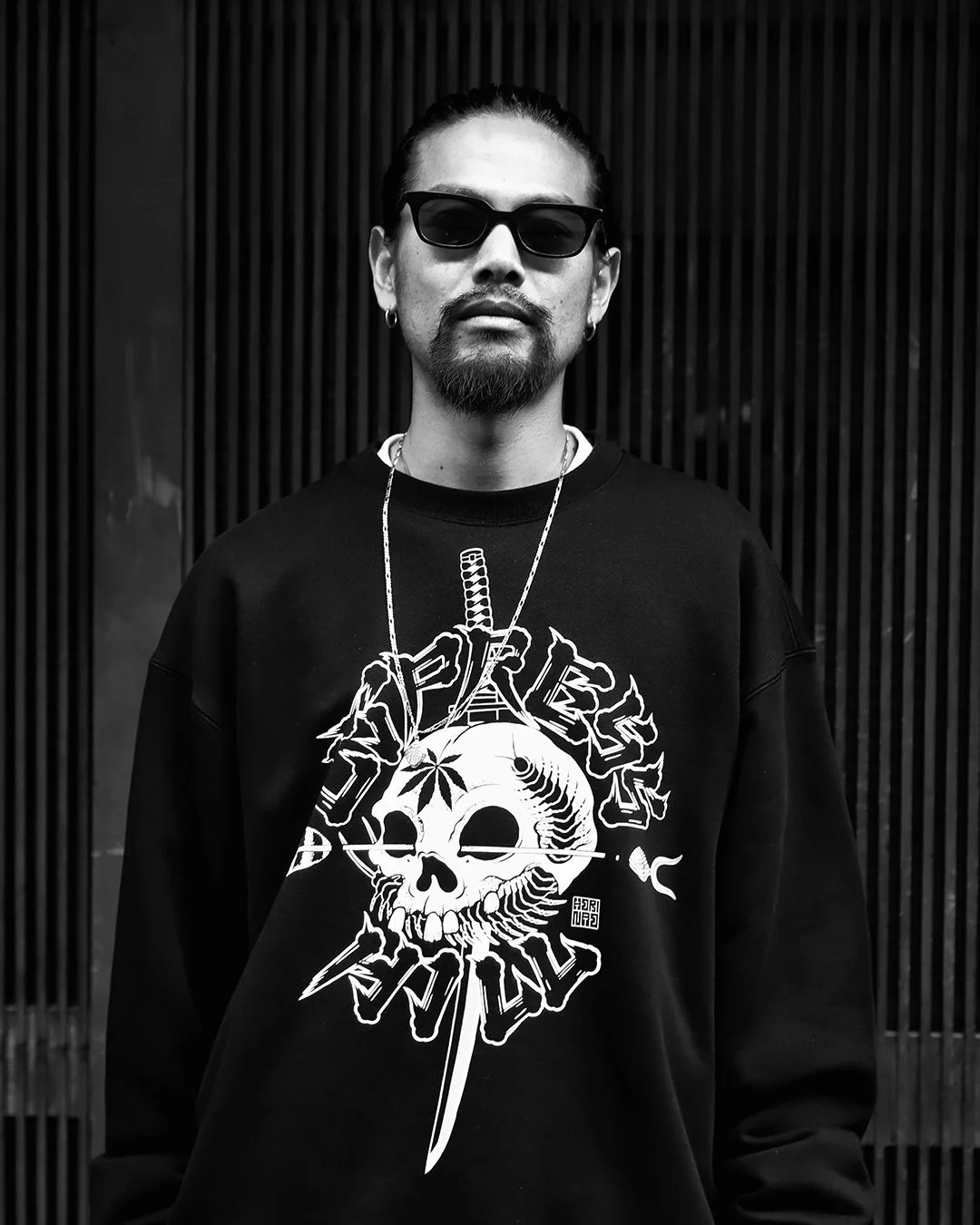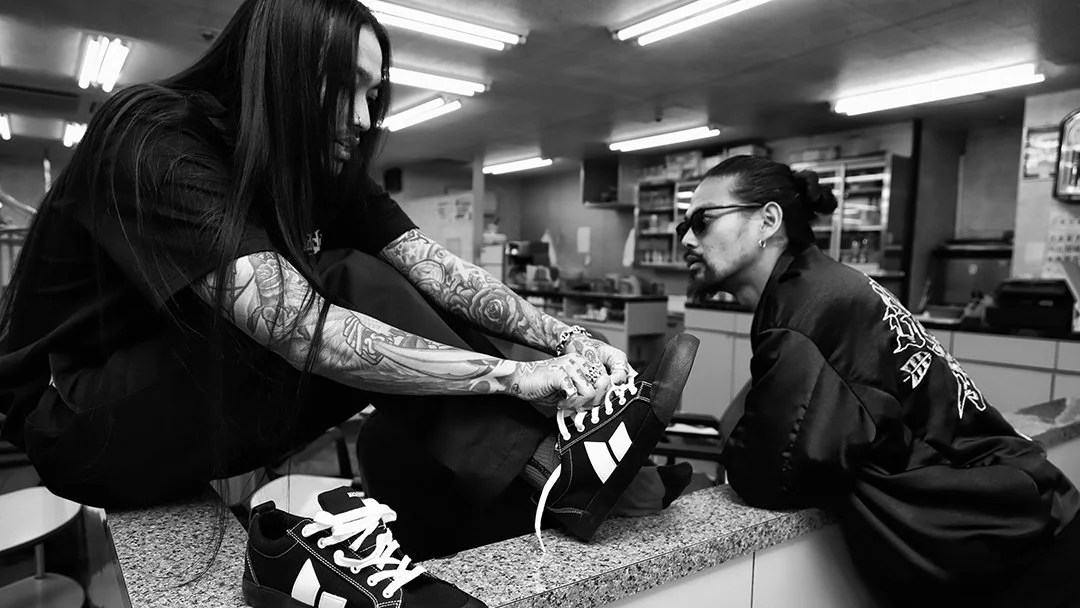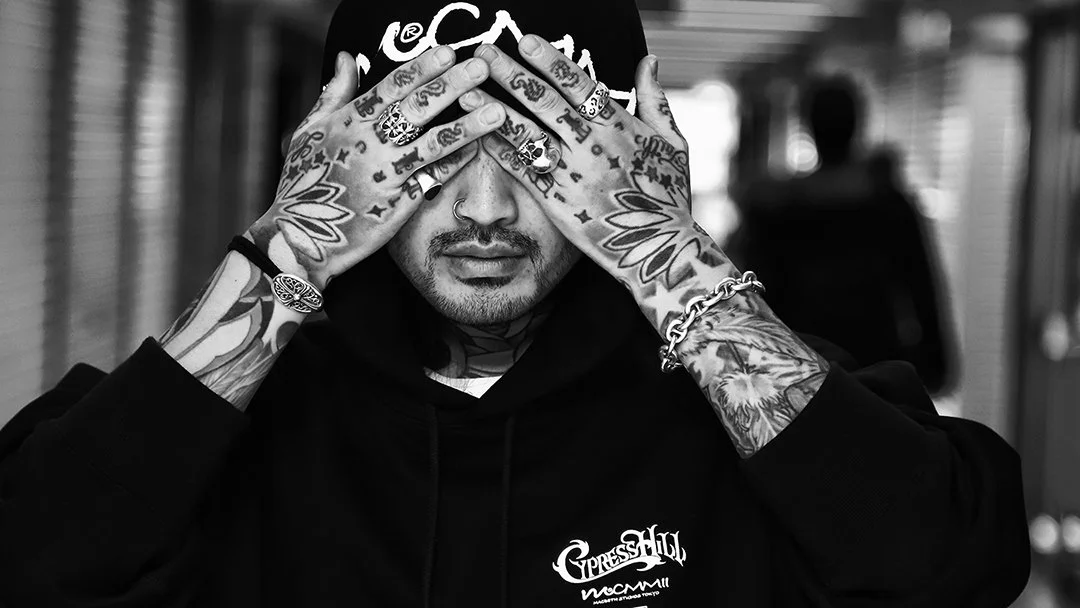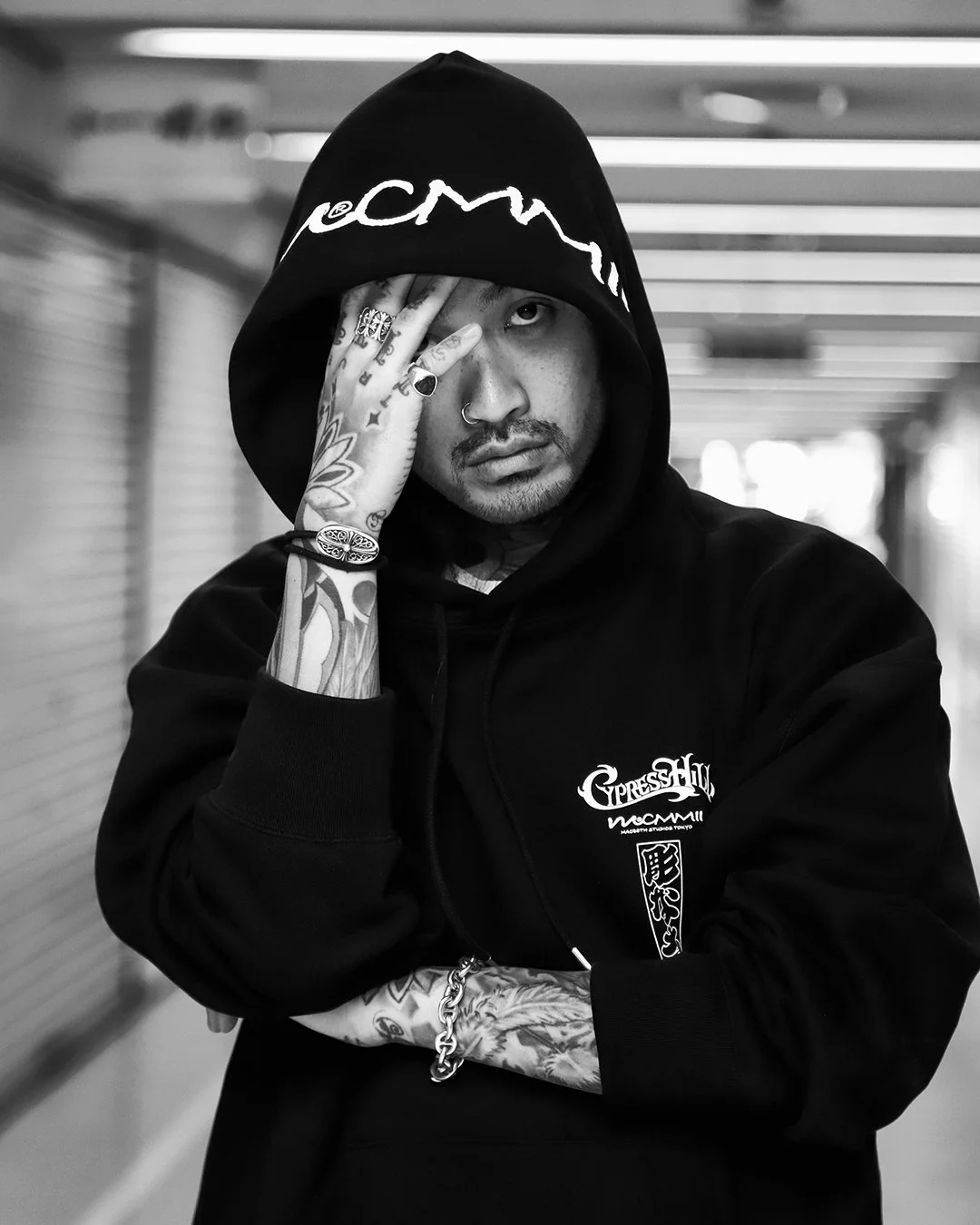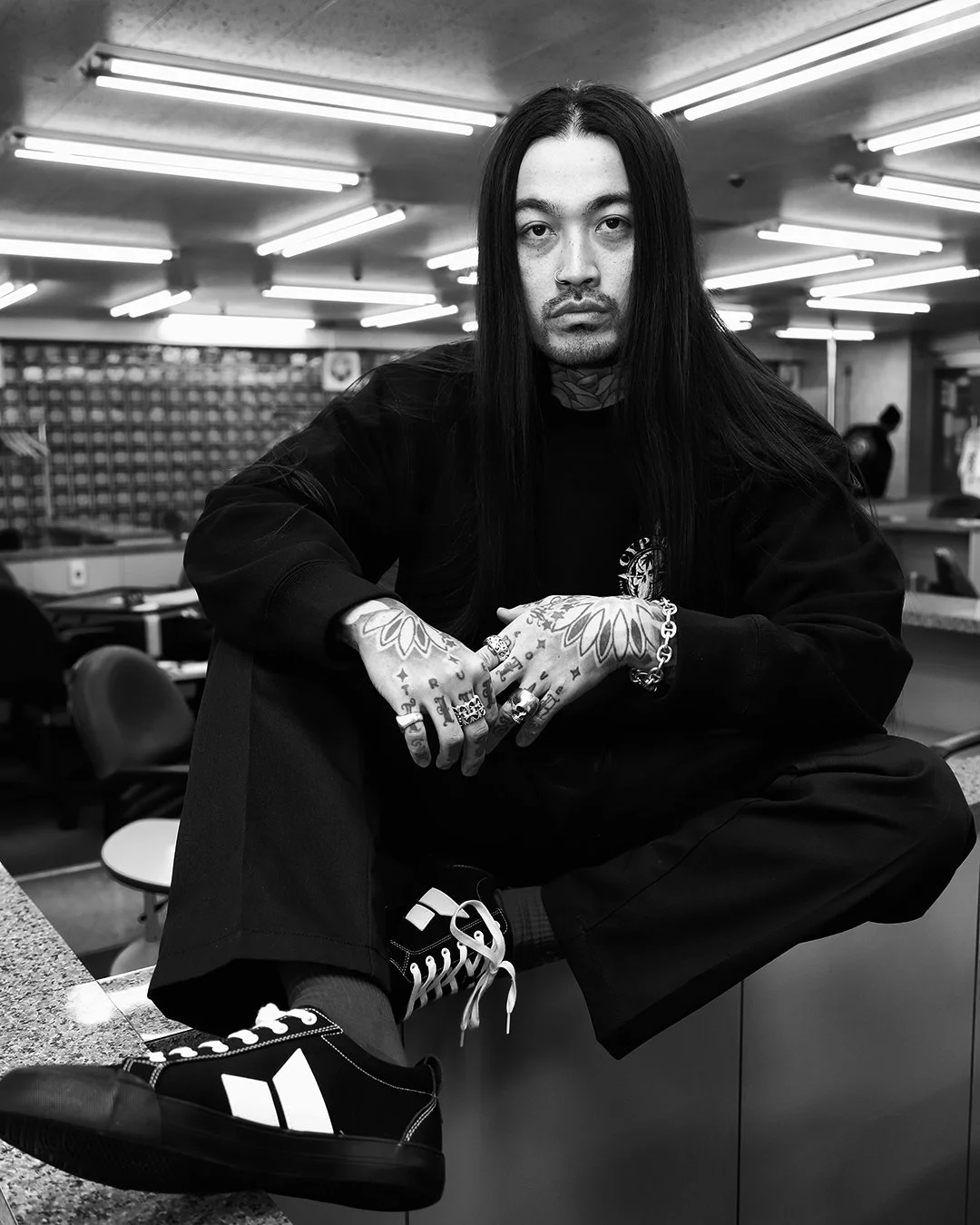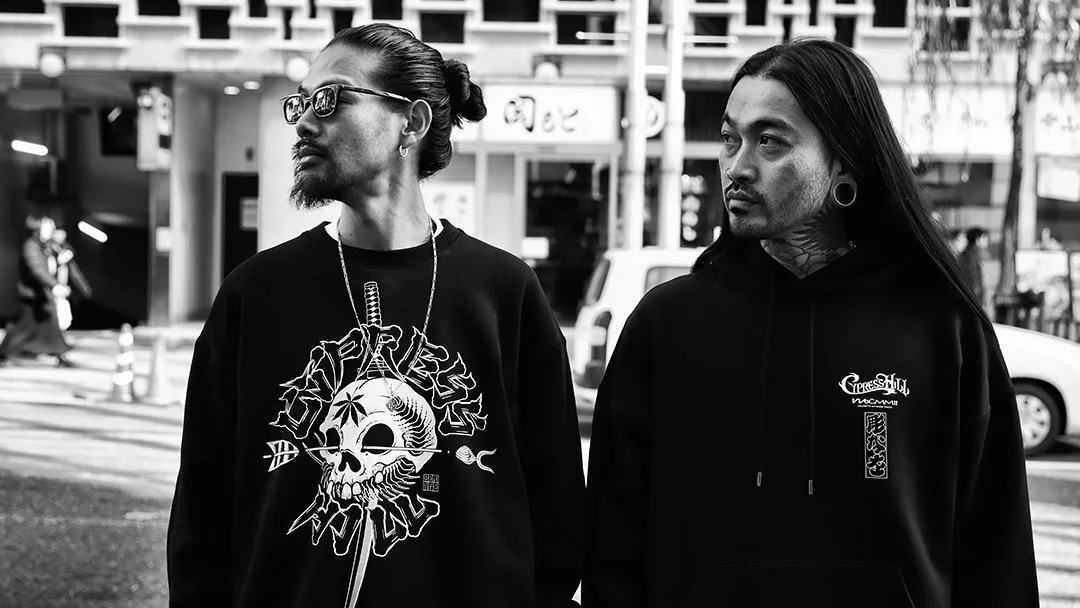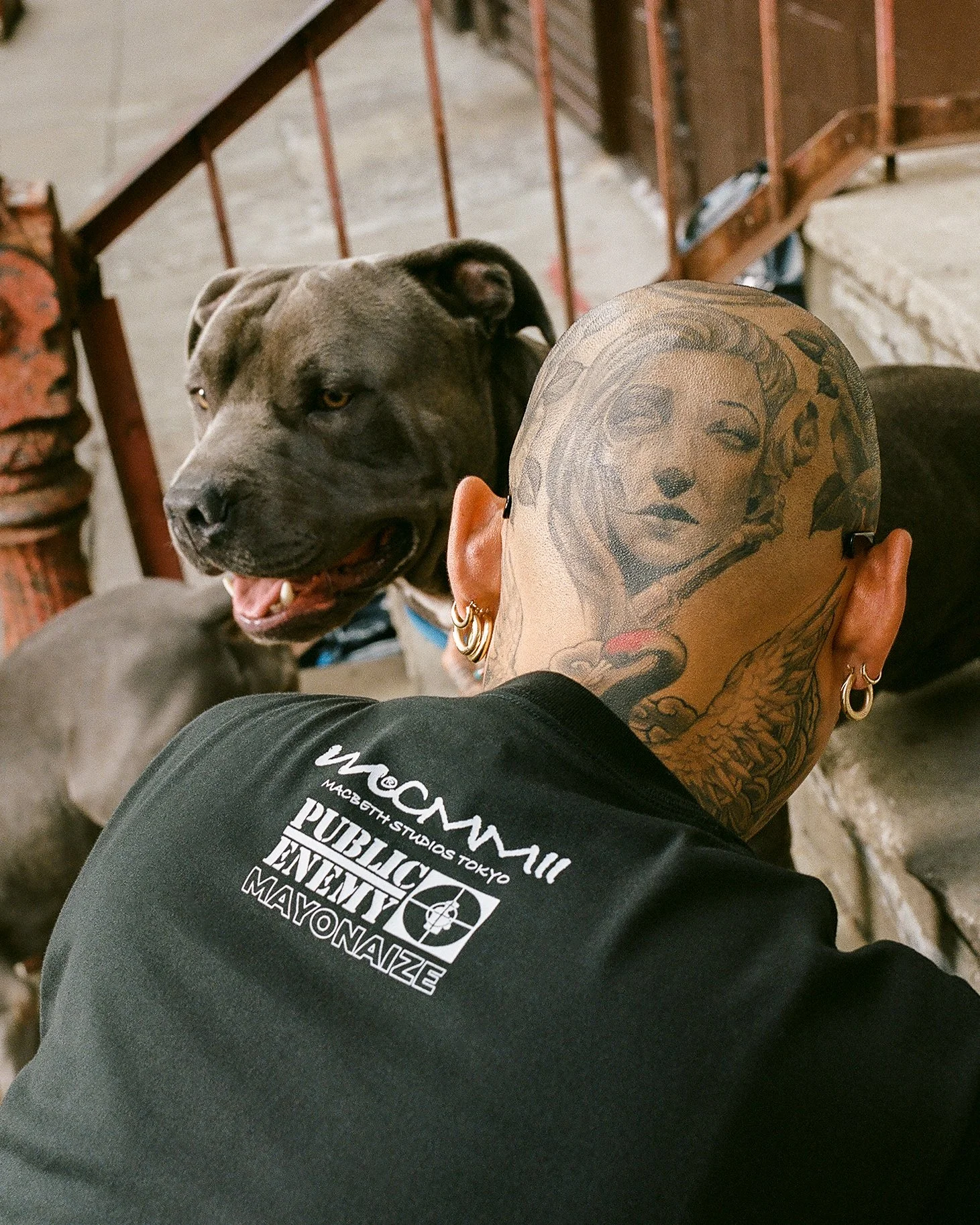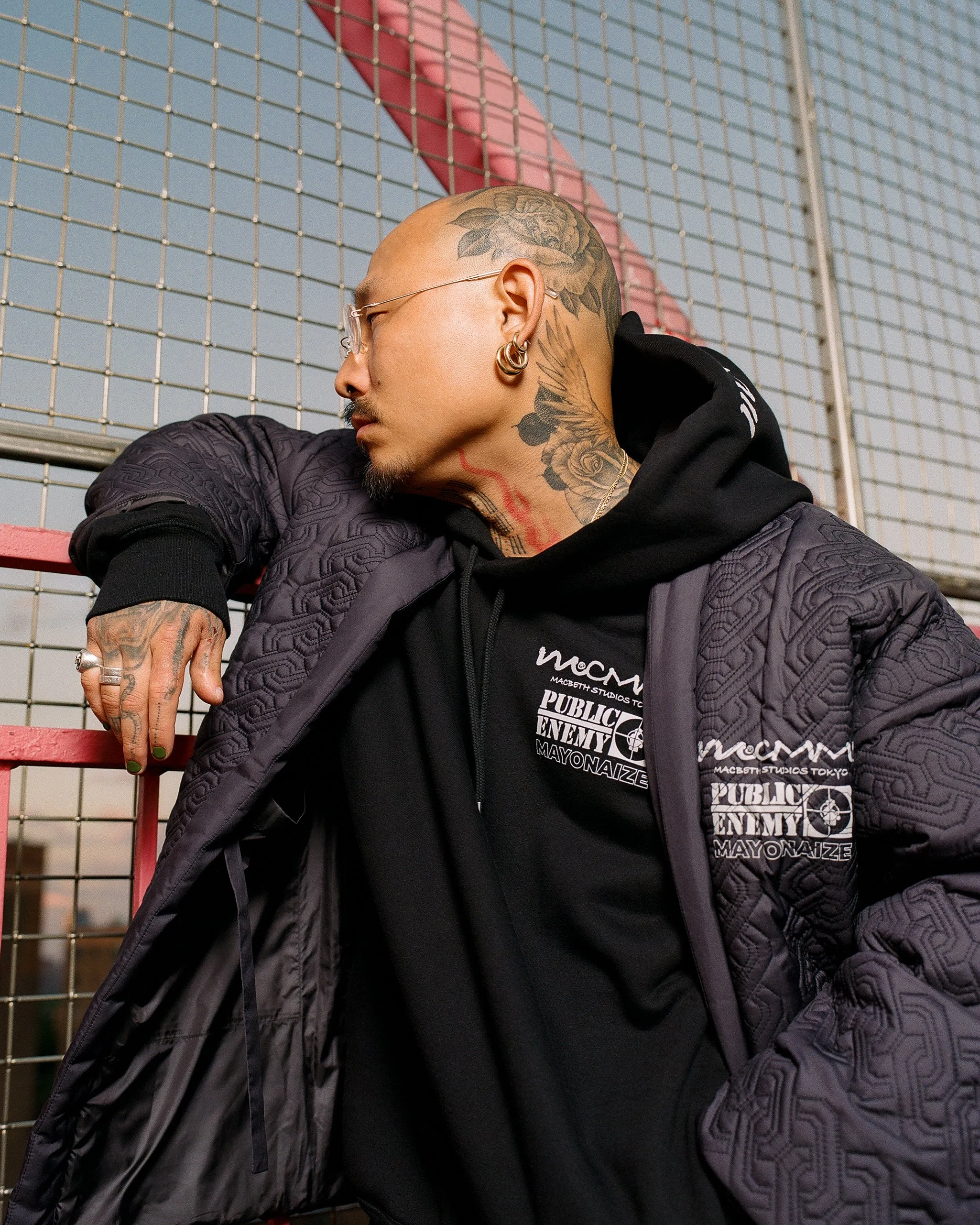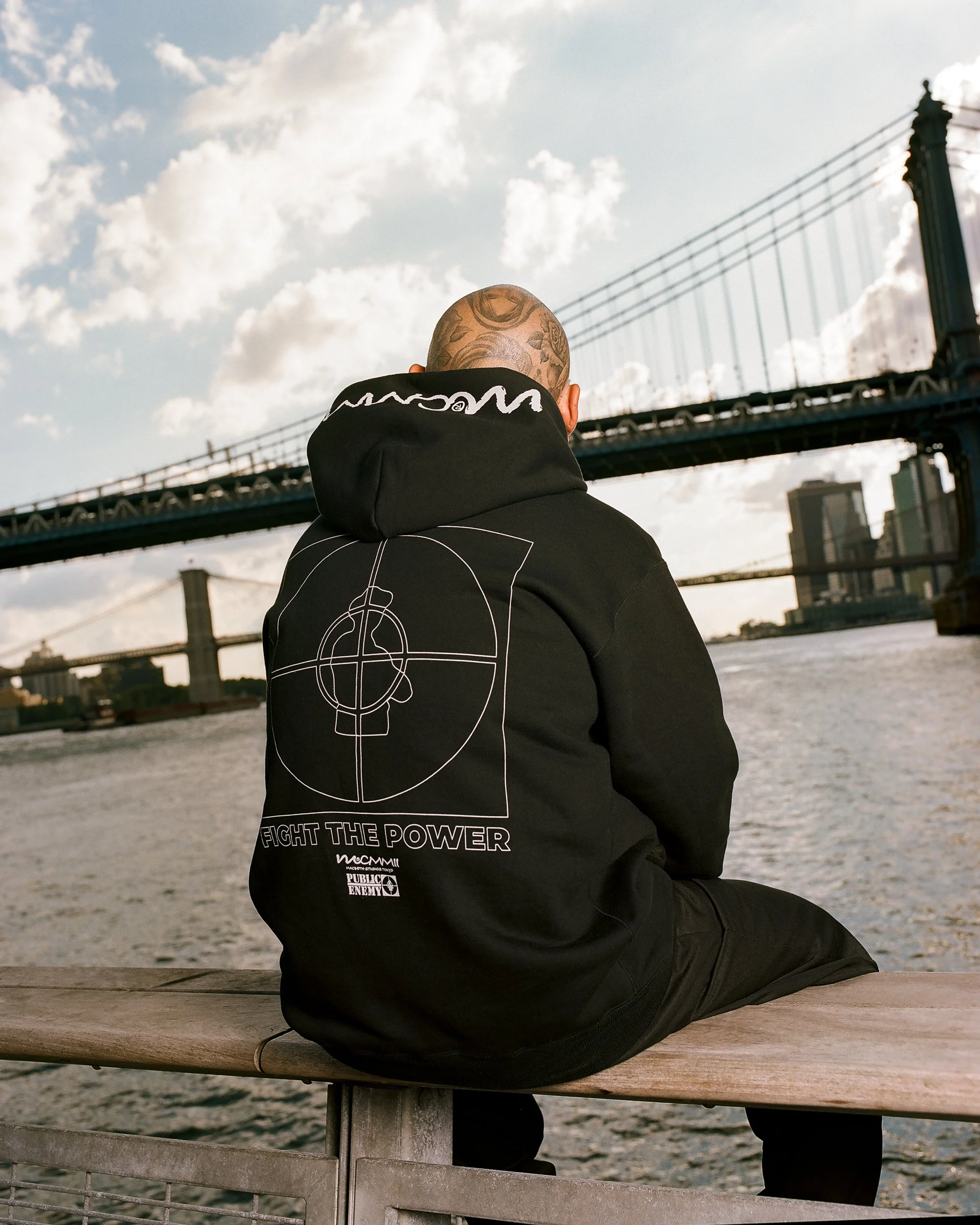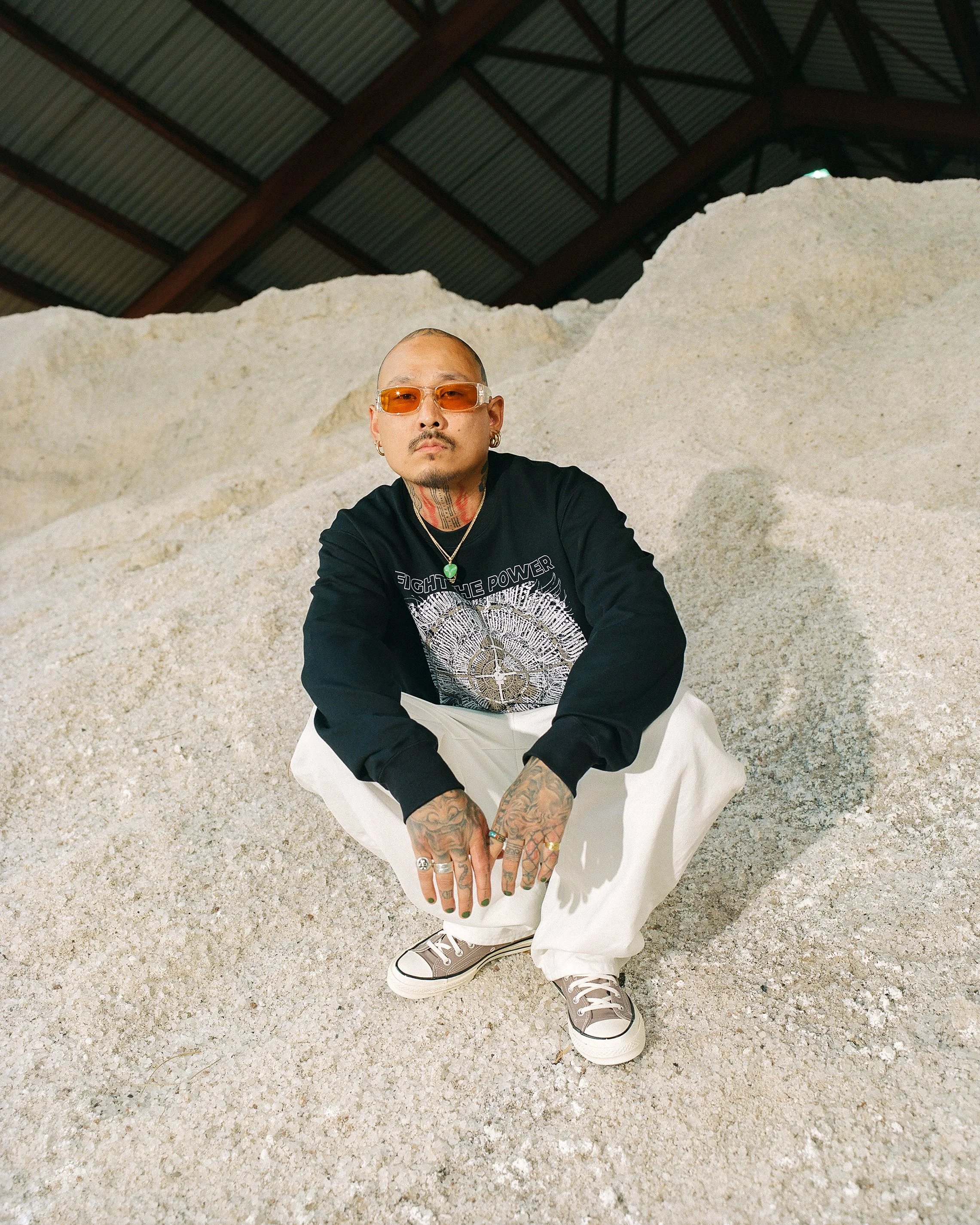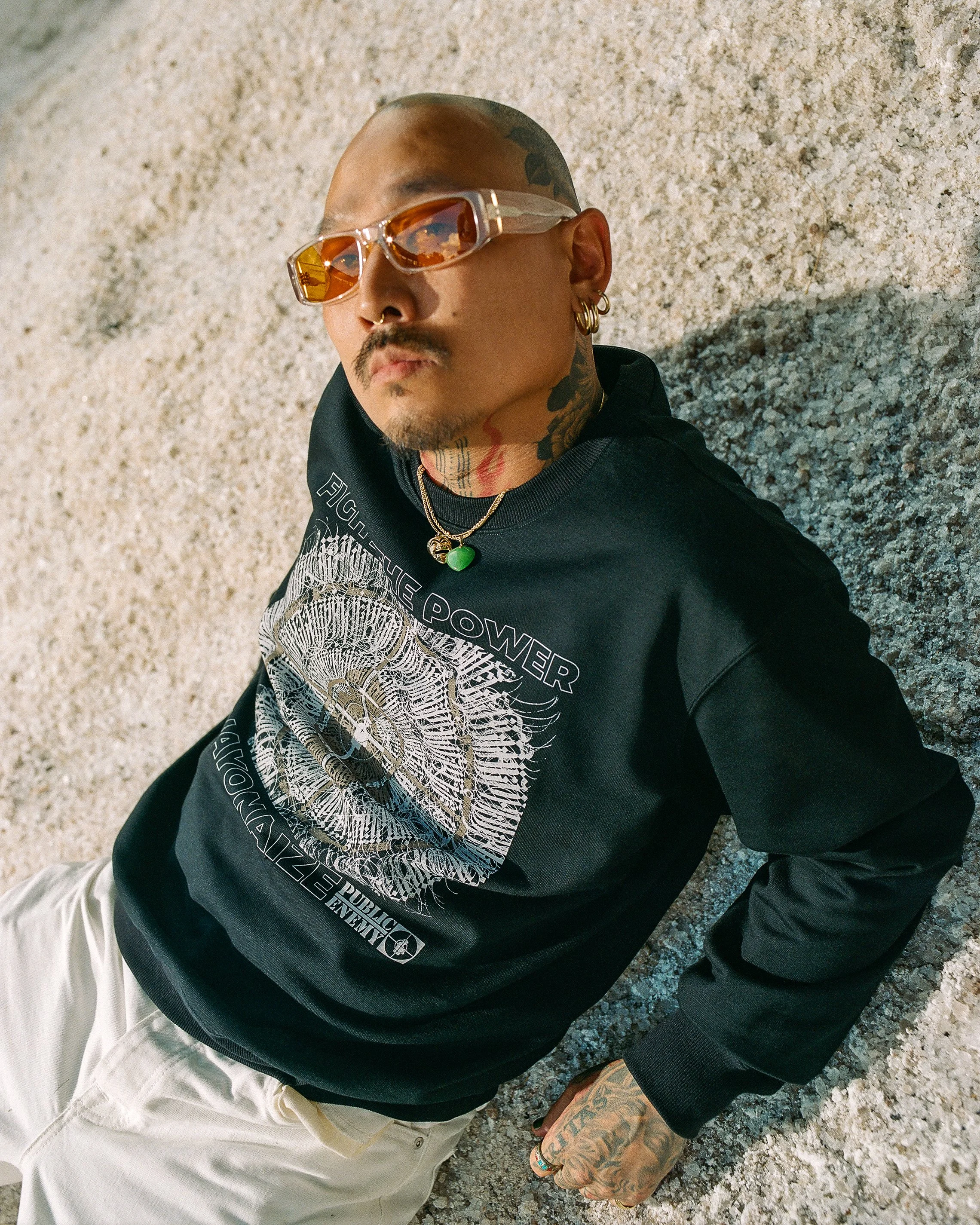MACBETH STUDIOS COLLABORATES WITH HORINAO X CYPRESS HILL
Considered to be among the main progenitors of West Coast Hip Hop and 1990’s Hip Hop, the confrontational and culture shifting South Gate rap group Cypress Hill teams up with Macbeth Studios Tokyo to launch a limited edition collection with acclaimed underground Japanese tattoo artist Horinao.
Based in Nippori, Tokyo, Horinao, a student of the Kanto-Bori style under master Hori kazu of Sendagi, creates an exclusive and reflective artwork for Macbeth Studios inspired by the multi-platinum music and original logo of Cypress Hill.
Macbeth Studios are proud to again celebrate the accomplishments of two significant artists in their second fashion series entitled “Illusions”.
In a rare, contemplative and behind the scenes interview, Horinao puts into words his artistic process in creating the exclusive design for Macbeth Studios.
When and why did you decide to make a career as a tattoo artist?
I apprenticed to my predecessor "Hori Kazu" when I was 20 vears old in 1998, and I have been working as tattoo artist for 25 years.
"Wabori" is an inking technique unique to Japan. What are your favorite motifs and techniques?
Dragons are the most popular motif of "Wabori" and many of my customers choose them. I often use a technique like Suiboku-ga using sumi ink these days.
How do you feel about being chosen as the artist for this collaboration?
When Stan first offered me this project, I was purely surprised. I was like. "Why me?” But I had listened to Cypress Hill a lot in the past, so I thought, If it's OK with me, sure, I'll do it.
What was your overall process in creating the artwork?
The canvas for the gallery was much larger than I am used to, so I had to calculate very carefully before starting the brushstrokes. When I actually started thinking about what kind of arrangement I was going to make,
I was surprised at the variety of ideas that came to mind. Usually, when I design artwork, I always try to follow the groove of my inspiration.
But this time, I had to calculate very carefully before starting the brushstrokes, I think I was also able to learn a new technique through this collaboration.
The original Cypress Hill logo had a maya arrow on it when I saw it, from there, I was inspired by the image of a Japanese warrior in the Medieval and Sengoku Periods.
I came up with the image of a Japanese sword piercing a skull and as I was writing, I felt the message from the music of Cypress Hill to "keep moving forward,” so I added a picture of a centipede.
Since early Japanese times, the centipede has had the meaning of "never taking a step back” which I thought was powerful for the design.
Any message you would like to send to Cypress Hill about this collaboration?
I hope they will like this new artwork. And would like them to continue to make good music and entertain everyone.
How do you think Japanese tattoo culture is going to change in the future?
The trend these days tends, once again, seem to lean towards the old style rather than new designs and as a result, I believe the fundamental elements will remain much the same.
MACBETH STUDIOS TAKES A STAND WITH MAYONAIZE X PUBLIC ENEMY
November 7, 2022
The energy of New York City throughout the 90s remains unmatched. The fashion was fresh, the art was outspoken, and genres like hip-hop were developing rapidly with some of the best artists in its category.
Tapping into the cultural zeitgeist, Tokyo-based brand Macbeth Studios launches the Mayonaize x Public Enemy collection. Combining style, passion, and self-expression that blends the artistry of powerful figures, its latest pieces serve up a strong message with the uniform tagline: “Fight the Power”.
Hailing from Wellington, New Zealand, Mayonaize is an artist who predominantly creates in the world of graffiti and tattooing. Known worldwide for his calligraphy-styled art on any canvas, Mayonaize explains the importance of blending passion in your profession. “Your hobbies should be enjoyable," he adds of his art, "So, for me, creating is like a motor function. My joints, my muscles, my ligaments, they all move a certain angle and when I hit that angle it's really satisfying. So a lot of what I do is just because it is satisfying for me to do it. Basically, I'm always searching for the perfect brushstroke basically.”
This passion that stems from expressing your truest form is one of the many common characteristics between Mayonaize and Public Enemy and served as the basis for this collaboration. To celebrate the collaboration amongst cultural legends, we sat down with Mayonaize to talk about all things tattooing, the collection and, of course, the impact of Public Enemy.
How did you develop your own unique style?
I've been tattooing for 20 years and I haven't always been doing my exact style. Since tattooing can be stressful, I thought it would be good to do something else in the art world as an outlet. So I got into graffiti. It all started when I saw a video called “Style Wars”, which is about the birth of graffiti in New York and it inspired me to go and start painting graffiti myself. That’s when I began tagging, which is what forged my calligraphy style in tattooing.
What changes in your creative process from tattooing to painting to tagging?
Not a lot. To me, it’s the same thing. When tagging, I always look around. For example, f I'm going to paint a building, I look at the buildings around it. It’s a very similar process to tattooing. If I'm going to do a tattoo, I look at the shape of the body and I try and fit it with the shape of the body. I’m really lucky actually, I don't have to think too much about details because it’s a shared formula that I use. I just look at something and I can tell the best composition for it.
What changes in your creative process from tattooing to painting to tagging?
Not a lot. To me, it’s the same thing. When tagging, I always look around. For example, f I'm going to paint a building, I look at the buildings around it. It’s a very similar process to tattooing. If I'm going to do a tattoo, I look at the shape of the body and I try and fit it with the shape of the body. I’m really lucky actually, I don't have to think too much about details because it’s a shared formula that I use. I just look at something and I can tell the best composition for it.
What excites you about your collaboration with Public Enemy?
Stan from Macbeth has been awesome to work with, he gave me a lot of creative freedom. I think you always work best with people that give you a lot of space to do what you want to do. If you start by getting boxed in, your ideas will be watered you don't really get the full effect of your creation.
What kind of creative risks did you take in this collaboration?
The one real risk for this particular project was mixing the whites and the gold. I also used a color called "black gold". Originally I was going to use black on black for the actual public enemy figure. However, the black-on-black didn't have enough pop off the canvas. I wanted it to be subtle for the print so that if you look at the garment straight-on, it would be more silhouette-y, and if you caught some light on it, would help to pop the details in the lettering inside.
That's a very cool, specific detail. In what other ways, whether it was the collaboration process or the technicalities, made this collab different from others that you've been involved with?
It’s the level of people that I'm collaborating with. This is upper level – you don't get many groups like Public Enemy. I think I had a choice of three groups which I gravitated towards but ultimately went with Public Enemy because they were one of the first acts that I ever listened to. Plus, I knew that I could do something good with their logo. It's circular and my stuff leans towards a circular appearance as well.
So on a personal level, what does it mean for you to be able to collaborate with an iconic group like Public Enemy?
I used to listen to their albums when I was a child on the bus with my big, fluffy headphones and my Walkman. I remember everything about that experience, the album, the artwork. I used to be into copying logos when I was a kid and would recreate the Public Enemy one often. So obviously, getting to collaborate with world-famous individuals who pioneered rap was really special. I collaborated with other brands, but never with a cool group that I would listen to.
What sort of commonalities between you and Public Enemy do you think are present that allowed this collab to be so effortless and successful?
Honestly, I always look at my work like I'm mixing a beat. So I get some words and then I have to arrange those words on a surface to make it look attractive. That’s what Public Enemy does too. They take the English language and arrange those words in a way that made people gravitate toward what they created. There's a real similarity between all artists there.



